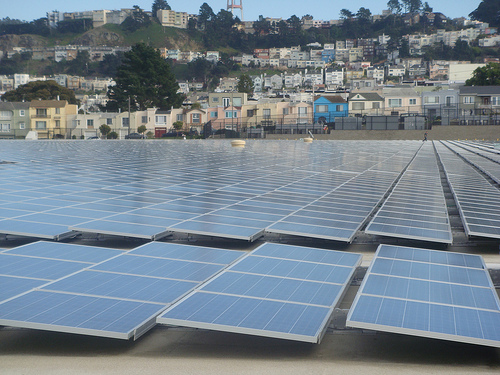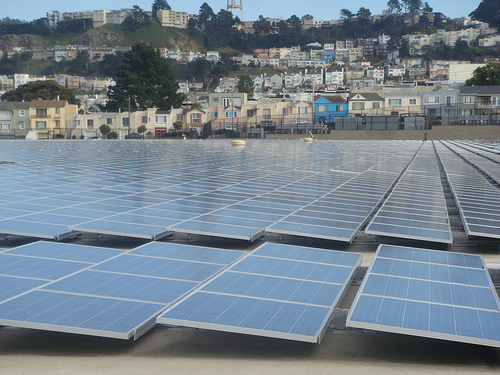 A San Francisco solar installation. Photo: Gavin NewsomEarlier this week, I wrote about the green evolution in California regarding electric cars. Well, when it comes to solar energy, it’s starting to look more like a revolution.
A San Francisco solar installation. Photo: Gavin NewsomEarlier this week, I wrote about the green evolution in California regarding electric cars. Well, when it comes to solar energy, it’s starting to look more like a revolution.
This week, utility Southern California Edison asked regulators to approve 20-year contracts to buy 250 megawatts of electricity from 20 small-scale photovoltaic farms.
Nothing especially newsworthy about that until you start reading through the document submitted to the California Public Utilities Commission (hat tip to Adam Browning of the Vote Solar Initiative). Turns out that in response to its request for bids, Southern California Edison received offers in excess of 2,500 megawatts.
In other words, there’s a whole lotta solar companies out there eager to generate carbon-free electricity.
And willing to do it relatively cheaply. Southern California Edison noted in its submission letter that the 20 projects — which will generate between 5 and 20 megawatts — will produce electricity at a cost below what utility industry wonks call the “market price referent.” The MPR, as they call it, represents the levelized cost over 20 years of a combined cycle gas turbine like those typically found in natural gas power plants in the Golden State.
So in plain English, the developers of these solar farms have told the utility that they can produce electricity cheaper than a fossil fuel power plant.
The increasing competitiveness of photovoltaic power is a reflection of the steep drop in solar modules prices in recent years, thanks in large part to the rapid expansion of manufacturing capacity by Chinese solar companies. But solar modules themselves typically represent just half the cost of a project, so the growing competitiveness of solar energy probably also is due to developers’ increased efficiency at building power plants and cutting other costs.
It was notable that a homegrown technology, concentrating photovoltaics, is among those 20 contracts that came in below the market price referent. Amonix, a Southern California company, will supply the technology for four power plants. The company’s concentrating photovoltaics panels boost electricity production by using plastic lens to focus sunlight on highly efficient solar cells.
The conventional wisdom until recently was the technology was still just too expensive to be commercialized. Guess not.
As Vote Solar’s blog put it, “That’s a lot of solar, at a good price.”



